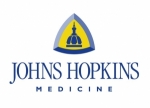Computer-Aided Cancer Early Diagnosis (CACED)
Through DeepLR
DeepLR software (Copyright © 2018 and 2021, Johns Hopkins University. All rights reserved) was developed by Peng Huang from Department of Oncology (primary) and Biostatistics (secondary), Johns Hopkins University. DeepLR was designed to help primary care physicians to make an informed clinical decision how a patient can be optimally treated or followed during the follow-up lung screening visits. DeepLR requires the individual to have chest CT image readings from at least two scans (S1 and S2 visits) that are 3 months to 2 years apart. DeepLR was trained using data from the National Lung Screening Trial (NLST) for individuals who meet the following:
- Inclusion criteria: age 55-74 years, 30 or more pack-years of cigarette smoking history, and at most 15 years since quitting for former smokers.
- Exclusion criteria: history of lung cancer, history of non-lung cancer (except non-melanoma skin cancer or carcinoma in situ) within the past 5 years, recent medical problems in pneumonia or other acute respiratory infection, unexplained weight loss, coughing up blood, removal of any portion of the lung.
DeepLR computes a person’s lung cancer risk using the person’s demographics and chest CT scan readings from current clinical visit (S2 visit) and a prior clinical visit (S1 visit). DeepLR algorithm outputs the following estimates:
- DeepLR score = risk of lung cancer development in the next 3 years of S2 visit date
- interval.fu = recommended clinical follow up interval in months for the next lung CT scan. If this value is zero, it means that an immediate diagnostic referral is recommended.
- aggressive = risk of aggressive tumor development. A tumor is considered to be aggressive if it is associated with lung cancer mortality. Low, median, and high risk of aggressive tumor development is defined by the aggressive risk score of <0.00565, between 0.00565 and 0.19500, and >0.19500 respectively.
- aggr.group = aggressive tumor risk category defined by aggressive score using thresholds <0.00565 (low risk), between 0.00565 and 0.19500 (moderate risk), and >0.19500 (high risk) : 1=low risk, 2=moderate risk, 3=high risk.
DeepLR was independently validated in 2294 individuals from Pan-Canadian Early Detection of Lung Cancer (PanCan) study. See our Lancet Digital Health publication: “Prediction of lung cancer risk at follow-up screening with low-dose CT: a training and validation study of a deep learning method” (https://www.thelancet.com/journals/landig/article/PIIS2589-7500(19)30159-1/fulltext).
Due to limited web server computational capacity, this website only hosts a simplified version of DeepLR software for public use. The prediction accuracy in the simplified version is reduced as compared to the full version of DeepLR because we have to use reduced number of iterations in algorithm parameter estimation without guaranteed convergency in parameter estimates to accommodate web server computational capacity. The DeepLR prediction of National Lung Screening Trial participants at follow-up screening visit from the full version is available here. The full version of DeepLR software has about 1GB in file size with guaranteed convergency in parameter estimates, and can be run in local computer (PC or MAC) at a much faster speed (within a couple of minutes). You can get the full version of DeepLR by contacting Lisa Schwier ([email protected], Tel: 410-614-0300).
You need to prepare two input data files before using DeepLR. The instruction to prepare these two data files can be found under Tools in the main menu, or from https://www.caced.jhu.edu/tools/ . If you have already prepared these files, you can simply click “DeepLR Calculator” below:
